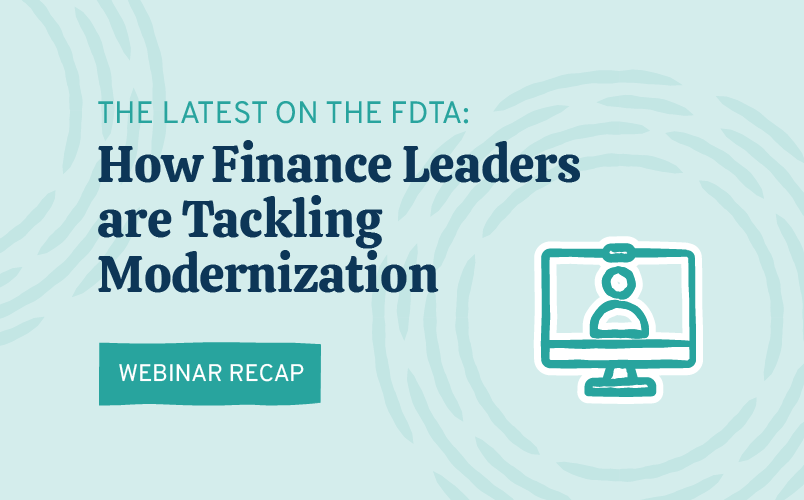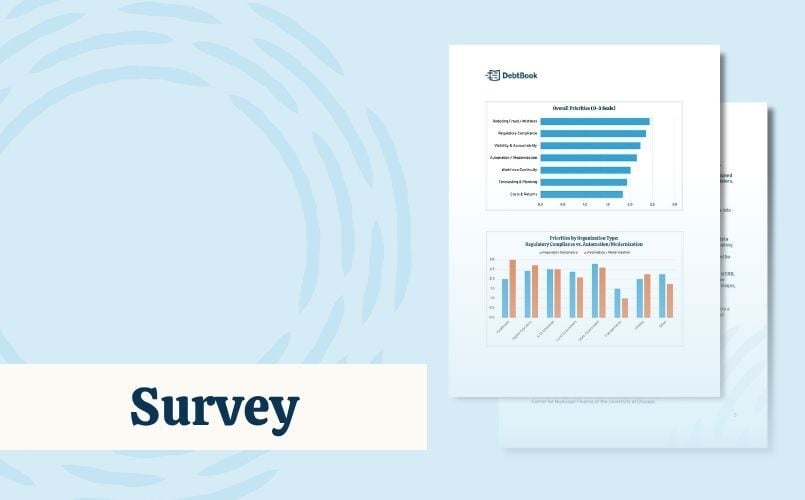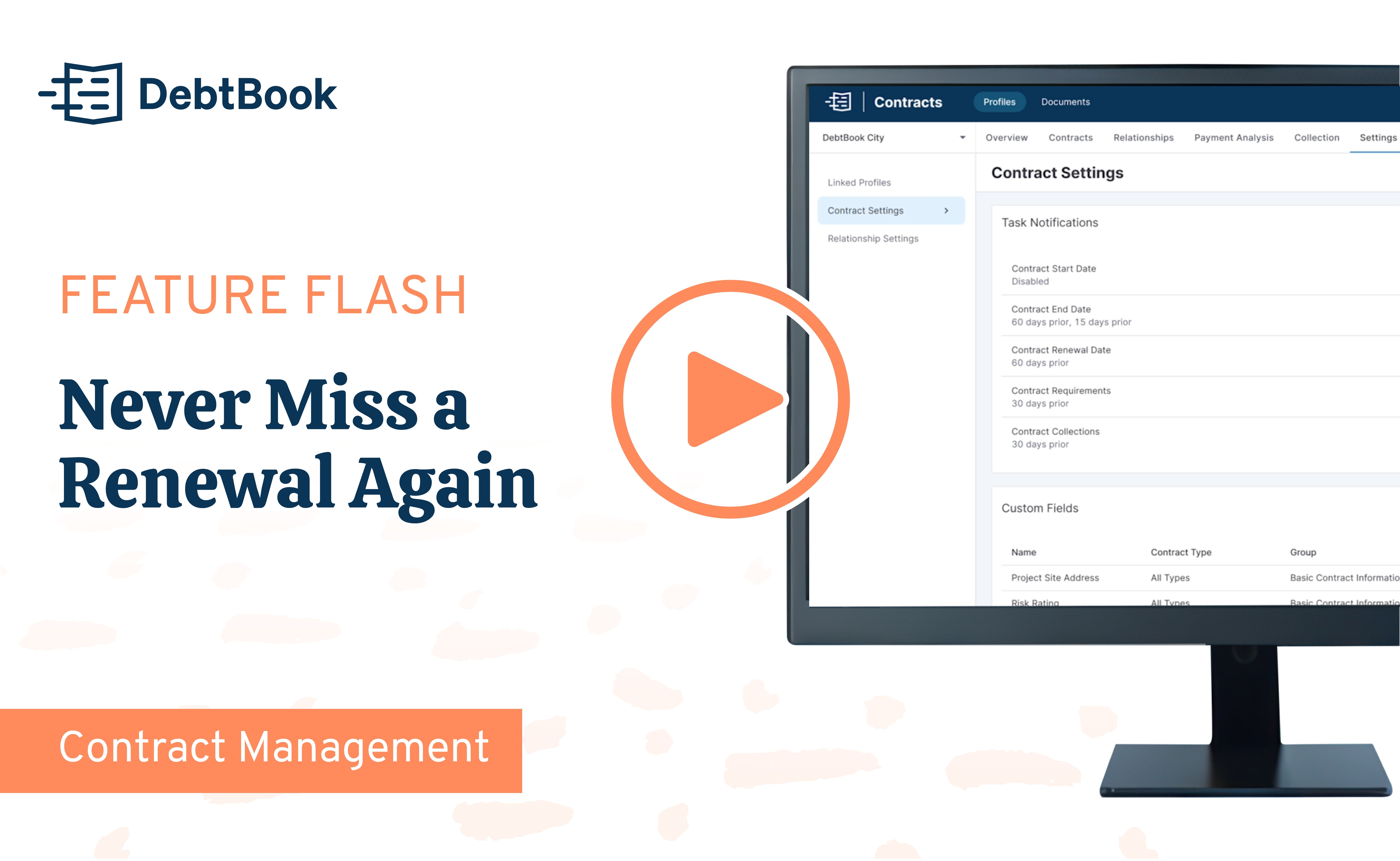On October 17, 2024, DebtBook and Funkhouser & Associates co-hosted "The Latest on the FDTA: How Finance Leaders are Tackling Modernization" webinar, which provided an essential look at the Financial Data Transparency Act (FDTA) and its transformative potential for municipal finance.
The session, moderated by Mark Funkhouser, President of Funkhouser & Associates, featured a professional panel of speakers, including:
- David Stringfellow, Deputy State Auditor of Utah
- Liz Sweeney, President of Nutshell Associates
- Tyler Traudt, CEO and Co-Founder of DebtBook
The discussion centered on the proposed joint rule issued in summer 2024, offering insights into where we stand in the FDTA implementation process and the strategic steps finance leaders should take to prepare.
Beyond compliance, the webinar explored how FDTA-driven modernization could unlock new opportunities for improved accountability, better public fund management, and more effective engagement with stakeholders.
Watch the FDTA Webinar Recording
FDTA Overview and Key Provisions
Tyler Traudt, CEO and Co-Founder of DebtBook, kicked off the webinar by providing a comprehensive overview of the FDTA. He explained that this bipartisan law, enacted in December 2022, aims to make financial data more accessible, uniform, and useful for both investors and the public. The FDTA impacts more than 40,000 issuers, ranging from small municipalities to large cities, hospitals, and universities.
The core objective of the Act is to standardize the format for financial reporting, such as those filed with the Municipal Securities Rulemaking Board (MSRB), without adding new disclosure requirements.
Traudt highlighted the transformative nature of the FDTA, noting that by 2027, all financial data must be machine-readable, searchable, and tagged with identifier codes, ensuring greater accessibility and transparency. The transition, overseen by nine federal agencies, will enhance how financial data is reported and consumed, making it easier for stakeholders to analyze the financial health of municipalities.
New Steps in the Process
Traudt also discussed the steps currently underway to bring the FDTA to fruition. A joint rule proposal was issued in August 2024, offering further details on the implementation process. The U.S. Securities and Exchange Commission (SEC) and MSRB are expected to finalize the specific rules governing municipal finance by December 2026, with full implementation set for 2027.
During his remarks, Traudt pressed the importance of preparing now, as the timeline for implementation is long but inevitable. He outlined key considerations from the proposal, including the flexibility municipalities will have in choosing data transmission standards and how legal entity identifiers (LEIs) will play a role in the standardization process.
Traudt also discussed the balance between benefits and costs, noting that while modernization can initially seem burdensome, the long-term gains in efficiency and transparency far outweigh the challenges.
Real-World Case Studies of Data Modernization
During her presentation, Liz Sweeney, President of Nutshell Associates and a board member of the MSRB, shared her professional insights on how the FDTA could transform municipal finance.
Sweeney drew on her extensive experience as a credit rating analyst and municipal advisor to offer practical examples of data modernization efforts that align with the FDTA’s goals. Sweeney also reflected on her involvement with XBRL US, where she participated in developing data standards for making financial data machine-readable—a concept central to the FDTA.
Sweeney began her discussion by sharing two key case studies: corporate reporting through the SEC and Florida’s use of XBRL for local government financial reports.
Corporate Reporting with XBRL
Sweeney explained how the SEC has utilized XBRL (eXtensible Business Reporting Language) for corporate reporting since 2009. XBRL is an open-source data standard that helps corporations file financial reports in a machine-readable format, making it easier for regulators, analysts, and investors to access and analyze data. In 2018, the SEC transitioned to iXBRL, a more interactive, web-based version of the standard that allows for greater flexibility and ease of use.
She talked about the importance of using standard definitions and hierarchies to ensure consistency across financial reports. For instance, terms like "cash," "long-term debt," and "salaries" are tagged with precise definitions from the Financial Accounting Standards Board (FASB) taxonomy. These tags not only enhance clarity but also enable data quality checks, helping finance teams maintain accurate and reliable reporting.
Sweeney also touched on the lessons learned from corporate reporting in XBRL, including the role of machine-readable portions in documents. Only sections that need to be machine-readable are tagged, allowing other sections to remain in their traditional formats.
Florida Case Study
Sweeney then discussed Florida’s early adoption of XBRL for local governments. In 2018, Florida passed a law requiring Annual Financial Reports (AFRs) to be filed in XBRL starting in 2022. This initiative covered about 1,800 local entities, including cities, counties, and special districts.
The state also developed a user-friendly public website, allowing users to search for entities, select a year, and view financial reports in multiple formats, such as XBRL or PDF. Sweeney showed an example from Miami’s 2023 AFR, illustrating how machine-readable formats can improve both transparency and public access.
Key Lessons Learned:
Sweeney concluded her segment by sharing the lessons learned from these data modernization efforts, which align closely with the FDTA’s objectives:
- Start with a Pilot: Begin with a voluntary pilot program to ease the transition and identify potential challenges before full implementation.
- Keep it Simple: Start with the basics and gradually add layers of complexity over time.
- Engage Stakeholders: Involve both statement preparers and data users throughout the process to ensure the system meets everyone’s needs.
- Embed Quality Checks: Build in mechanisms to ensure the accuracy and reliability of the data.
- Use Hybrid Formats: Consider using both human- and machine-readable formats to meet the needs of different users.
Utah's Transparency Initiative and Practical Applications
David Stringfellow, Deputy State Auditor of Utah, provided valuable insights into Utah’s long-standing commitment to financial transparency and how these principles align with the goals of the FDTA. Drawing on his 15 years of experience working with the state’s transparency initiatives, Stringfellow shared Utah’s journey of using technology to improve public access to financial data and offered practical advice for other municipalities preparing to adopt similar standards.
Utah’s Approach to Transparency
Stringfellow described how Utah began its transparency initiative 15 years ago by creating a system that abstracts every governmental entity’s general ledger (GL) on a transaction-by-transaction basis. The state established simple data standards, requiring municipalities to submit their financial data in a standardized format, such as a CSV file, which could then be ingested into a central Oracle database. As the system grew, Utah transitioned to cloud-based architecture to enhance scalability and efficiency.
This shift not only improved data accessibility but also positioned Utah as a leader in financial transparency, demonstrating how a modern approach to data management can support long-term sustainability.
Value of Transparency
Stringfellow discussed the real-world value that financial transparency offers to both the public and government entities. By making detailed financial data available through public-facing tools, Utah has enabled citizens, researchers, and decision-makers to easily access, analyze, and use this information. This transparency supports more informed decision-making and offers practical benefits, such as reducing borrowing costs by highlighting a municipality’s financial strength.
He noted that transparency reduces the burden of understanding complex financial data and allows municipalities to showcase their financial health, which can lead to lower interest rates and better credit ratings.
In other words, when municipalities provide clear, accessible data, the financial markets—and ultimately taxpayers—benefit.
Practical Benefits for Stakeholders
Stringfellow shared several practical examples of how Utah’s transparency initiative has empowered stakeholders. For instance, at a public finance council meeting, concerns were raised about police funding and the allocation of resources for public services, such as street cleaning. Using Utah’s transparency tools, stakeholders can now easily search the state’s website to see exactly how much money is being spent on these services, creating a robust open conversation about how public funds are being used.
Stringfellow illustrated how transparency not only builds trust between the government and its citizens but also promotes more efficient use of public resources. Municipalities can use the data to assess their own operations and identify areas for improvement, leading to better service delivery and cost savings.
Panelists’ One Minute Takeaways
As the webinar drew to a close, each panelist shared a final takeaway, offering practical advice on how finance leaders can best prepare for the FDTA and leverage its benefits for their organizations.
- Tyler Traudt highlighted the long-term gains finance teams can expect through modernization. He acknowledged the initial challenges, especially for finance teams that are understaffed and overwhelmed. However, he stressed that with the right tools—many of which come at no cost—these challenges can be overcome. Traudt stated, “I’m excited to see how these solutions come together to take what is a challenge and turn it into a successful outcome.” DebtBook, he added, is committed to helping CFOs and their teams navigate this shift to make it a valuable experience.
- Liz Sweeney urged finance leaders to view the FDTA not just as a regulatory hurdle but as an opportunity to improve data utility and benchmarking. She reassured the audience that, while there is anxiety around adopting new standards, the benefits of transitioning to machine-readable financials will quickly outweigh the challenges. “Once we do that, there will be a lot of benefits for folks to be able to use that data,” Sweeney explained, “not just to contribute but also for their own benchmarking.”
- David Stringfellow recommended a phased approach to FDTA adoption to minimize disruptions and ensure that organizations can reap the transparency benefits over time. He encouraged finance leaders to get ahead of the transition, as early adoption will be more cost-effective than waiting until the last minute. “Get ahead of it in a functional sense, and you’ll see the benefits accruing to you,” he advised, adding that this transparency will ultimately result in a much clearer picture of how public money is being spent.
Conclusion
The FDTA marks a transformational shift in how municipalities will manage and disclose their financial data. By moving from static, outdated reporting methods to dynamic, machine-readable formats, the FDTA offers more than just regulatory compliance—it provides finance leaders with a powerful tool for improving strategic management and enhancing public accountability.
Watch the full webinar for more detailed insights and best practices for navigating the transition to FDTA compliance.
Related FDTA Reading
- Issue Brief: Early Adopters Demonstrate How Local Governments Can Prepare for the FDTA
- April Webinar Recap: The Latest on the FDTA | How Finance Leaders are Tackling Modernization
- Playbook: How Local Governments Can Prepare for the FDTA
Disclaimer: DebtBook does not provide professional services or advice. DebtBook has prepared these materials for general informational and educational purposes, which means we have not tailored the information to your specific circumstances. Please consult your professional advisors before taking action based on any information in these materials. Any use of this information is solely at your own risk.





.jpg)
